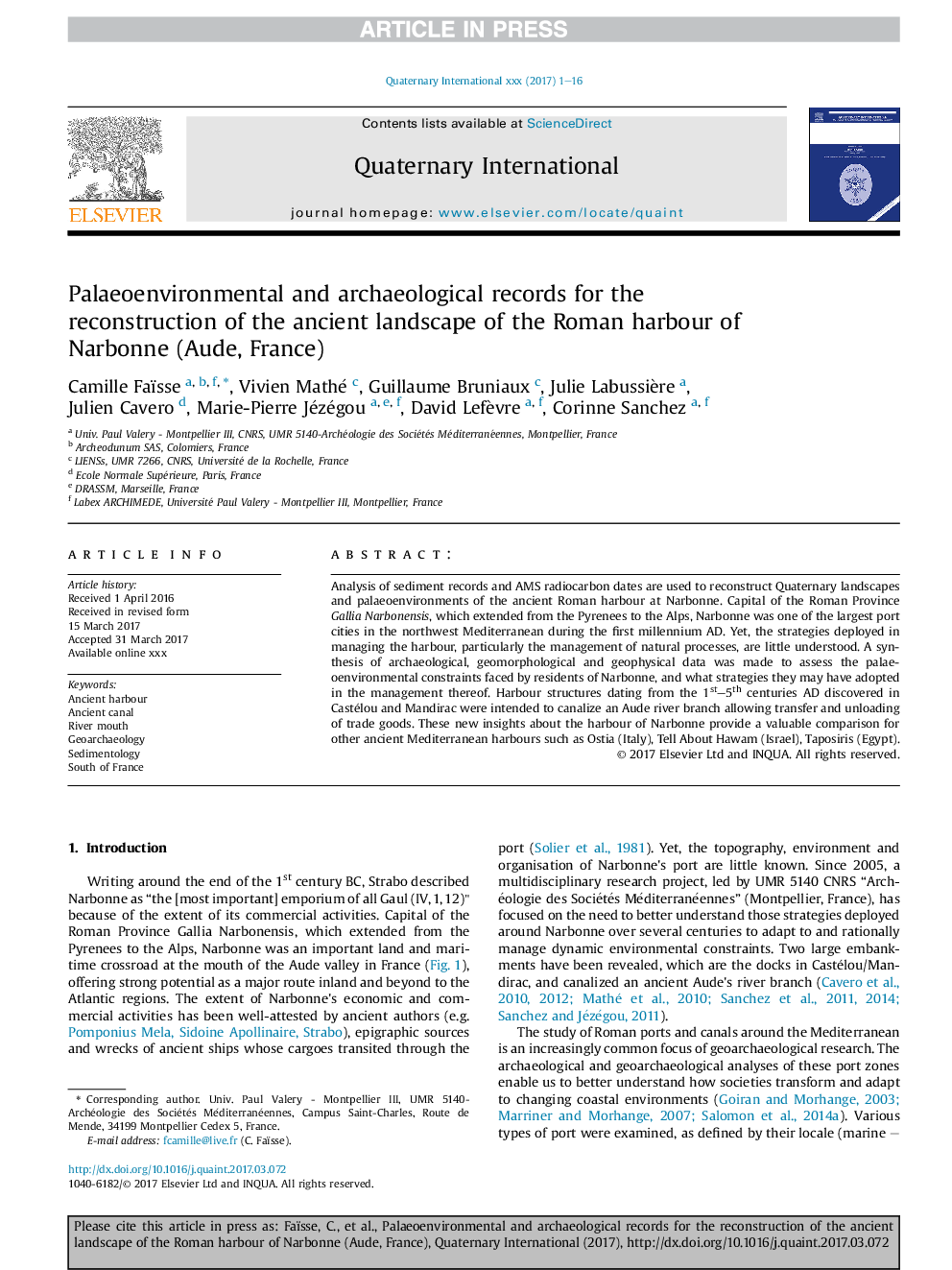| Article ID | Journal | Published Year | Pages | File Type |
|---|---|---|---|---|
| 7451061 | Quaternary International | 2018 | 16 Pages |
Abstract
Analysis of sediment records and AMS radiocarbon dates are used to reconstruct Quaternary landscapes and palaeoenvironments of the ancient Roman harbour at Narbonne. Capital of the Roman Province Gallia Narbonensis, which extended from the Pyrenees to the Alps, Narbonne was one of the largest port cities in the northwest Mediterranean during the first millennium AD. Yet, the strategies deployed in managing the harbour, particularly the management of natural processes, are little understood. A synthesis of archaeological, geomorphological and geophysical data was made to assess the palaeoenvironmental constraints faced by residents of Narbonne, and what strategies they may have adopted in the management thereof. Harbour structures dating from the 1st-5th centuries AD discovered in Castélou and Mandirac were intended to canalize an Aude river branch allowing transfer and unloading of trade goods. These new insights about the harbour of Narbonne provide a valuable comparison for other ancient Mediterranean harbours such as Ostia (Italy), Tell About Hawam (Israel), Taposiris (Egypt).
Related Topics
Physical Sciences and Engineering
Earth and Planetary Sciences
Geology
Authors
Camille Faïsse, Vivien Mathé, Guillaume Bruniaux, Julie Labussière, Julien Cavero, Marie-Pierre Jézégou, David Lefèvre, Corinne Sanchez,
